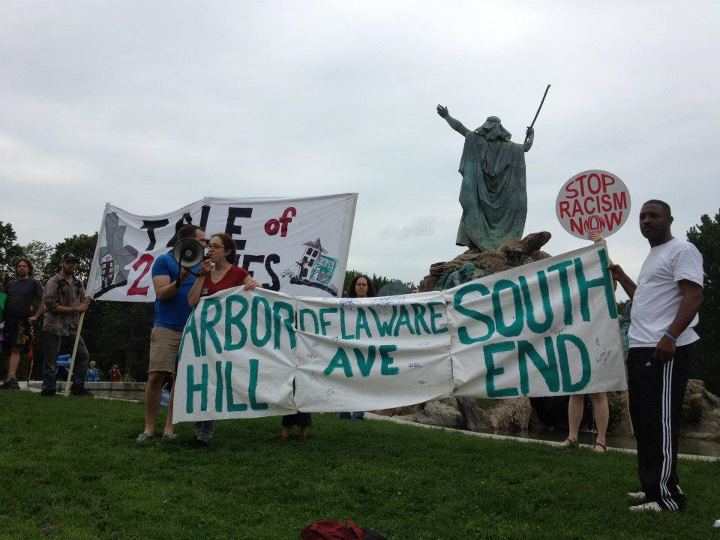Equitable regions are stronger, healthier regions for everyone. This is becoming more and more of a bedrock understanding within our field. This understanding has transformed much of the work of community development, leading us to more collaborations with regional efforts such as transportation planning and transit-oriented development.
As Angela Glover Blackwell wrote in Shelterforce, “Inequity imposes high costs on virtually every actor in the regional economy, and in turn, state and national economies. Sharp regional disparities stifle growth, slow momentum, and erode the sense of community that binds neighbors, and communities, together.”
But when that sense of community and being in this together has been eroded, how to you generate the momentum to change those disparities? How do you overcome the sense of neighborhoods struggling against each other in a zero-sum game?
Mindy Fullilove talks about the idea of physically reconnecting a torn urban fabric as essential to reducing health disparities in her article the latest issue of Shelterforce, as one piece of this. I think related to that is a need for some socil and symbolic reconnecting.
Earlier this summer here in Albany, NY, Occupy Albany and two neighborhood-based organizations, A Village Works, and MAMAS (Mothers Against Murders and Shootings) organized a Tale of Two Cities march. One goal was to highlight the differential level of services and opportunities available in different city neighborhoods, and call for measures to increase equity, such as a better vacant property strategy. The other was to build cross-neighborhood relationships.
What I found so exciting and unusual about the event was the symbolism of its format.
Three feeder marches came from the city's two largest distressed neighborhoods and one integrated, mixed-income neighborhood and met together in the city's central park, physical stitching together banners bearing each neighborhood's name. After a rally there, we all marched together uptown to a somewhat more affluent but still mixed-income neighborhood, where we were welcomed by a gathering of supporters who spoke about how the interests of all of our neighborhoods were aligned.
As we marched, one of the chants was a familiar standard into which we rotated the various neighborhood names: “When Arbor Hill is under attack, what do we do? Stand up, fight back! When Delaware Ave. is under attack, what do we do? Stand up, fight back! When the South End is under attack, what do we do? Stand up, fight back!” Hearing the names of each other's neighborhoods on each other's streets was powerful to me. Coming together and cheering each other in the park felt meaningful in a new and different way. As the poet Marge Piercy writes, “a ritual of unity makes some of what it pretends.”
I've been around these issues and hearing about organizing work from all over the country, but I've never heard of anything else quite like that event. (I'd love to see some kind of version that would make the same point on a city-suburb level.)
Now, the Two Cities march didn't launch a movement that has made Albany a beacon of equity in two months (and we need help). And it was far from inclusive of all the city's neighborhoods. But I think it built some relationships that weren't there before, and I think explicitly demonstrating and at the grassroots level the interdependence we talk about at a theoretical level could be a good starting point for building a base for some of the political will needed to prioritize, and realize, equitable, sustainable regions that provide opportunity for all.
Have you undertaken or been a part of this kind (or another kind) of cross-neighborhood solidarity work? Tell us about it!
(Photo by Bradley Russell.)






Comments